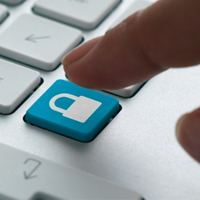Ten Ways to Fight Identity Theft
Recent reports estimate that as many as one in ten of the population have been a victim of indentity theft, one of the fastest growing crimes of the last few years. By using a variety of means to usurp your identity and pass themselves off as you, the criminals involved go on to commit fraud and theft in your name – leaving you to pick up the pieces afterwards.
The effects on your credit rating can be devastating and often take years to completely fix, so prevention is obviously better than cure. Here are ten simple ways to help you avoid becoming a victim.
1: Be careful with your old documents such as paid bills, bank statements, and receipts. Either keep them safely stored or destroy them if you don’t need them anymore. Don’t just throw them away, as fraudsters often start stealing an identity by searching for these very kinds of documents in household waste. Shredding or burning unneeded papers will prevent this first step.
2: Store your personal documents securely by keeping them somewhere out of the sight of visitors to your home.
3: If you change your address, make sure that you inform your bank, utility companies, and everyone else who sends you mail. Documents wrongly sent to a previous address are a favourite target of fraudsters.
4: Make sure that when you stop using a credit card or bank account, you actually formally close the account rather than letting it go dormant. Having an unused, forgotten about account resurrected by a fraudster might not even be noticed until serious damage has been done.
5: Watch your plastic – make sure you know where your credit, debit and ATM cards are, and tell the issuing banks immediately if you lose them or they’re stolen.
6: If possible change your PIN numbers and passwords to something easily memorable, and NEVER write them down, especially not on scraps of paper kept in your purse or wallet.
7: Don’t respond to phishing. Banks will never ask you for personal details via email, and won’t ask you for the password to your account. You don’t need to ‘reconfirm’ your details following an email request either – just delete the email. If in any doubt at all, call your bank to make sure the request is genuine.
8: Use anti-virus software and firewall on your computer, especially if you use online banking of any kind. Keep the software up to date as well to guard against attempts by hackers to discover personal information on your computer.
9: Check your bank account and credit card statements carefully when you receive them, and query with your bank anything that you can’t identify. Spotting a fraud in progress early on will vastly help in minimising the damage it causes.
10: Finally, monitor your credit reports regularly to see if anything appears that seems odd, such as applications for credit cards that you didn’t make, or missed payments on finance that you haven’t taken out. Services are widely available online which can help you do this by automatically informing you when something on your file changes.
None of us can be 100% sure that we won’t fall victim to the crime of ID Theft, but by taking the measures listed above you’ll be making the job of any potential fraudster very difficult indeed, and they’re likely to move on to an easier target!



